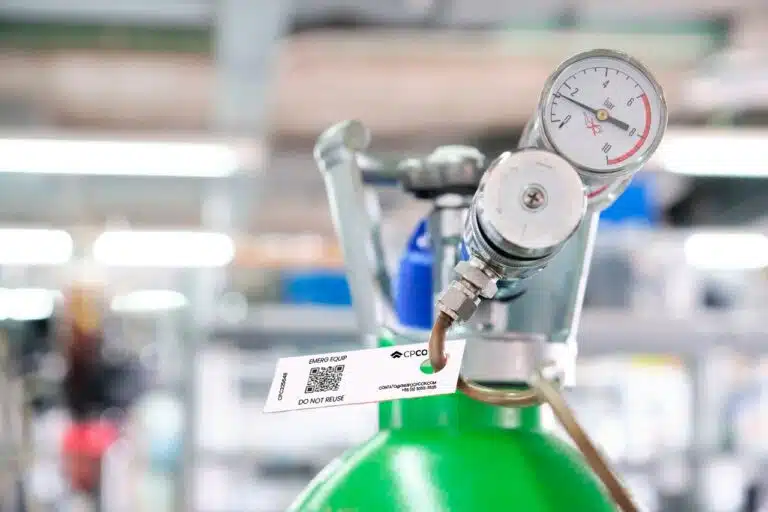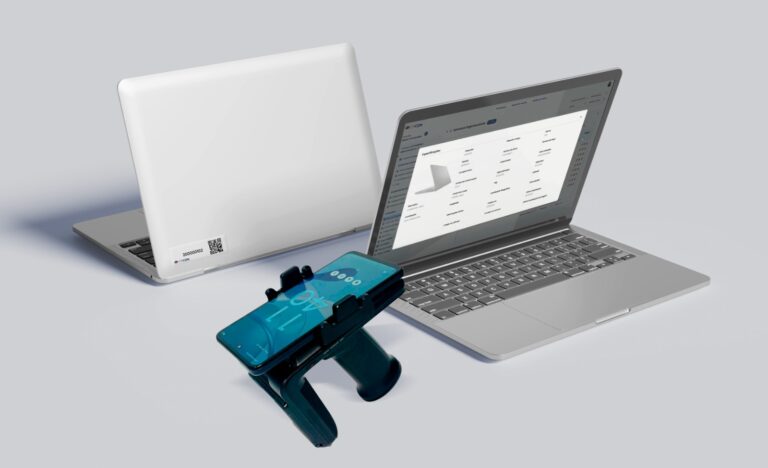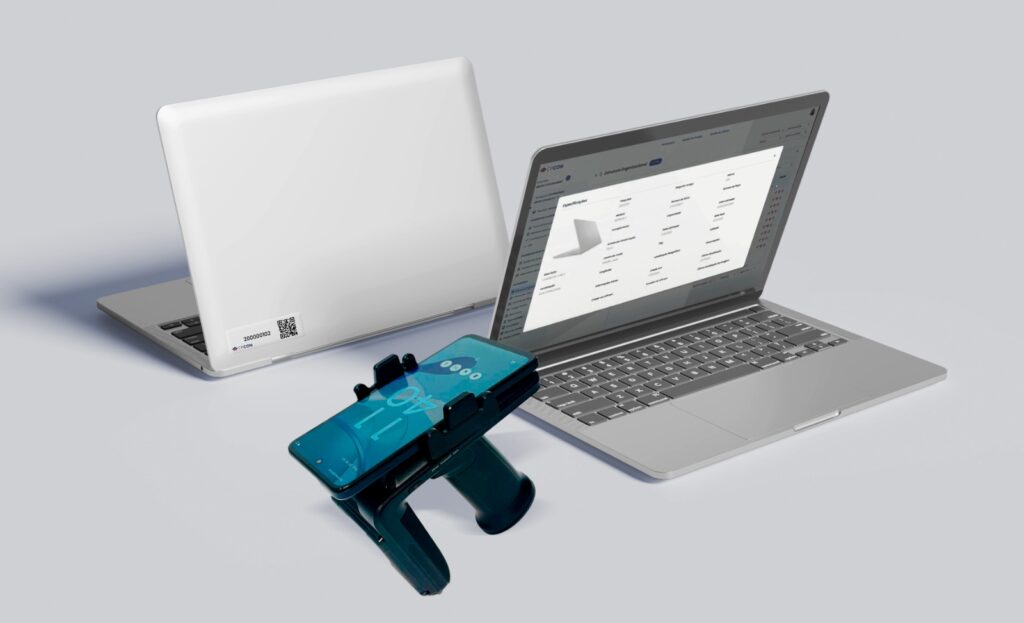In the fast-paced world of aviation, keeping track of millions of aircraft parts is a monumental task. The solution? A powerful duo: ATA SPEC200 and RFID tags. These technologies ensure critical components—like life vests, oxygen generators, and evacuation slides—are traceable, compliant, and ready when it matters most. At Cpcon Group, we’re proud to offer RFID solutions that align with these standards, making aviation safer and more efficient. Let’s dive into how it all works and why Cpcon Group is your go-to partner in this space.
Table of Contents
ToggleWhat is ATA SPEC200?
ATA SPEC200 is an international standard created by the Air Transport Association (ATA) to simplify data exchange and traceability in aviation. Think of it as the rulebook that keeps part numbers, serial numbers, and expiration dates organized and accessible. It’s the foundation for managing aircraft parts and emergency equipment, especially when paired with RFID (Radio Frequency Identification) tags.
For aviation pros, ATA SPEC200 is like a universal translator—ensuring every piece of equipment speaks the same language, whether it’s on a plane or in a warehouse.
How RFID Tags Work with ATA SPEC200
RFID tags are tiny wireless devices that store and transmit data, letting technicians track parts without unpacking them. But without structure, this could turn into chaos—different formats and unreliable reads. That’s where ATA SPEC200 steps in, standardizing how data is encoded and ensuring tags perform reliably.
Here’s the breakdown:
- Data Encoding: ATA SPEC200 defines how information—like part numbers and expiration dates—is stored on RFID tags, making it consistent and easy to read.
- Read Range: Tags must be scannable from at least 15 feet (4.5 meters), sometimes up to 30 feet, speeding up maintenance checks.
- Durability: Built to survive extreme heat (up to 180°C), vibrations, and chemicals, these tags are aviation-tough.
Imagine scanning a sealed life vest and instantly knowing its expiration date—that’s the power of ATA SPEC200 and RFID working together.
Why This Matters for Aviation
The combination of ATA SPEC200 and RFID tags brings big wins to the aviation industry:
- Safety First: Ensures emergency equipment is tracked and up-to-date, ready for any situation.
- Time Savings: Scan multiple tags in seconds, cutting downtime during inspections.
- Compliance Made Easy: Meets FAA, IATA, and GS1 standards, keeping you audit-ready.
- Cost Efficiency: Durable tags last longer, and faster processes save money.
In an industry where every second and every part counts, these benefits are a game-changer.

Key Features of ATA SPEC200 for RFID Tags
Here’s what ATA SPEC200 demands from RFID tags in aviation:
Feature Description Data Encoding Uniform formats for part numbers, serial numbers, and expiration dates. Read Range At least 15 feet (4.5 meters), with some applications needing up to 30 feet. Durability Tough enough for heat, vibrations, and chemical exposure. Compliance Aligns with GS1 EPC standards and FAA traceability rules.These specs make RFID tags reliable in the harshest aviation environments.
Cpcon Group Expertise in RFID Solutions
At Cpcon Group, we deliver RFID tagging solutions built for aviation’s unique challenges. Our tags offer:
- High-Temperature Resistance: Designed to handle extreme conditions without missing a beat.
- Customizable Encoding: Store the exact data you need—part numbers, maintenance history, and more.
- Extended Read Ranges: Our UHF RFID tags reach up to 10 feet, perfect for quick scans in busy hangars.
While we don’t explicitly advertise ATA SPEC200 compliance, our products’ durability and flexibility make them an ideal match for aviation needs. Check out our RFID Tags and Labels Solutions to see how we can help.
Real-World Impact
Big players like Boeing and Airbus rely on ATA SPEC200. Here’s how it shines in action:
- Life Vests: RFID tags track expiration dates even when sealed, ensuring they’re always ready.
- Oxygen Generators: Tags store manufacturing and usage details for instant checks.
- Evacuation Slides: Time-controlled parts stay on schedule, keeping passengers safe.
These examples show how ATA SPEC200 and RFID tags turn data into real-world safety and efficiency.
Standout Feature: Dual Record RFID Tags
One cool perk of ATA SPEC200? It supports “Dual Record RFID Tags,” which store:
- Birth Records: Original manufacturing details.
- Maintenance Records: Service and repair history.
This gives you the full story of a part—crucial for emergency equipment where every detail matters.
Why Partner with Cpcon Group?
Our RFID solutions are built tough, customizable, and ready to boost your aviation operations. From extended read ranges to high-durability designs, Cpcon Group has you covered. Explore our RFID Tags and Labels Solutions to learn more.
Ready to Get Started?
Want to upgrade your tracking game? Visit Cpcon Group RFID Tags and Labels Solutions page or reach out today to see how we can support your aviation needs.
Conclusion
ATA SPEC200 and RFID tags are the unsung heroes of aviation, keeping parts traceable and operations smooth. With Cpcon Group top-notch RFID solutions, you can tap into these benefits and elevate your business. Don’t wait—contact us today and unlock the power of smarter tracking!
FAQ
What is ATA SPEC200 and why is it important for aviation documentation?
ATA SPEC200 is a set of rules made by the Air Transport Association. It makes aviation documents more consistent and easier to follow. This helps reduce mistakes and makes maintenance work more efficient.
How does ATA SPEC200 support regulatory compliance?
ATA SPEC200 makes sure technical documents and manuals are the same everywhere. This helps everyone talk clearly and follow rules better. It’s key for keeping aviation safe and in line with laws.
What types of tags are used in aviation, and what are their purposes?
Aviation uses different tags like serviceable and unserviceable ones. There are also tags for parts and calibration. Each tag has its own job, like showing if a part is good or not, or keeping track of maintenance.
How can organizations implement ATA SPEC200 effectively?
To use ATA SPEC200 well, companies should add it to their maintenance plans. They should also train their staff and learn from others who have done it. It’s important to handle any problems that might come up, like people not wanting to change or not having enough resources.
What are the cost reduction benefits of using standardized tagging systems?
Using the same tags can save a lot of money. It makes making documents faster, cuts down on training costs, and helps avoid mistakes with parts. This makes managing inventory and audits easier.
What safety improvements are associated with the standardization in aviation maintenance?
Standardizing documents and tags makes maintenance safer. It cuts down on mistakes, makes communication clearer, and follows rules better. This means important info is easier to find during maintenance.
What future trends should aviation organizations be aware of regarding documentation standards?
New things like augmented reality for maintenance, blockchain for tracking parts, AI for checking documents, and new rules are coming. Companies should keep up with these changes to get ready for new ways of doing things.


























